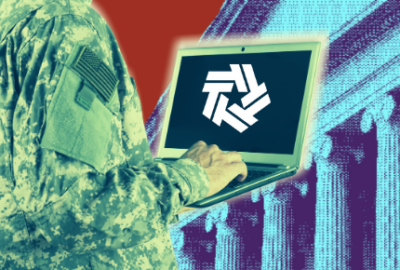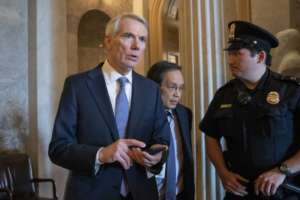

Sens. Rob Portman (R-Ohio) and Maggie Hassan (D-N.H.) introduced a bill to codify the IT modernization Centers of Excellence initiative as part of a growing ack...
Version 10 of the Federal IT Acquisition Reform Act (FITARA) scorecard is due out in late July.
In fact, the House Oversight and Reform Subcommittee on Government Operations will hold two hearings on IT modernization this month, including one that is likely happening this week featuring two former government experts.
These two hearings will kick off what many believe is both a renewed interest in technology modernization by Congress and a referendum on FITARA’s impact five years later.
“We are seeing a lot more interest in IT modernization from the legislative branch, mainly as result of COVID-19,” said Tony Scott, the former Federal Chief Information Officer and current CEO of the Tony Scott Group. “People are realizing that digital government is pretty important and how we deliver citizen services needs a lot more upgrading and resourcing than anyone was focused on before. I suspect in the next year or two, the renewed focus not just on FITARA but on the Technology Modernization Fund and other ways to help agencies. I’ve gotten lot of calls about the TMF asking how we should we alter it, upgrade it and just make it better. There will be a lot more scrutiny as a result of the pandemic.”
These signs started a month ago when Sen. Maggie Hassan (D-N.H.) wrote to 10 agencies asking about their IT modernization strategies. Responses to those questions are due by Aug. 3.
Federal CIO Suzette Kent said in a June interview that the letters give the administration and agencies another opening with Congress to discuss how to sustain IT modernization.
“What the letters and the budget discussions will help us do is draw a more direct parallel between the business objective of the agency and how we fund those, and what the right vehicles are,” she said. “Particularly, the things that require multi-year commitment because some of the questions to the agencies focus on systems that were older or more comprehensive and those things don’t happen in a single year. That will let us have some healthy dialogue there as well as let agencies share their perspective around how they have prioritized what their modernization looks like, and that’s a dialogue that is very important agency by agency.”
A second sign of the interest around digital transformation came Friday when Sens. Rob Portman (R-Ohio) and Hassan introduced the Modernization Centers of Excellence Program Act. The bill, which Federal News Network obtained, codifies and details the responsibilities of the CoEs’ role. It encourages agencies to use commercial technologies, more specifically public cloud services to address systemic challenges around security, data management and customer services needs.

“Ensuring that our government has the capabilities and expertise to help navigate the impacts of the latest technology will be important in the coming years and decades,” Portman stated. “This bipartisan legislation will ensure our government agencies have the insight and resources they need to better understand the benefits and pitfalls of this technology.”
A third sign of the continue push for Congressional interest came June 29 when seven associations wrote to Senate leadership asking for members to include IT modernization funding in the next stimulus bill.
In the letter, the associations reiterated its request for Congress to include more modernization and cybersecurity funding to address long-standing challenges that were exacerbated by the pandemic.
Among the requests are for Congress to fund the TMF at a level that promotes cross-agency investments and relaxes the requirement for payback during the pandemic. The associations also says Congress should accelerate the creation of IT working capital funds, as authorized by FITARA, and provide direct funding through the stimulus act for technology and cyber challenges.
In many ways the discussion agencies, industry and Congress are having today is because of the success of FITARA. While far from perfect, the 2015 law and continued oversight by Reps. Gerry Connolly (D-Va.) and Will Hurd (R-Texas) spurred agency attention and progress.
“As we get to the 10th FITARA hearing, the question of whether the scorecard is obsolete and needs refining is real because we have to keep pressure on agencies to continue the implementation,” said Rich Beutel, founder of Cyrrus Analytics and a former House Oversight and Reform Committee lead staff member and principal behind FITARA. “It seems that the capital planning and investment control process (CPIC) and PortfolioStat isn’t happening any more, and that was a major way to move agencies along with respect to core principles of FITARA.”
Beutel and other former federal officials say the scorecard needs updating, especially as we approach the 10th version.
“The scorecard needs to be amended to make it more current. The consensus among many people is it’s really dated at this point,” Beutel said. “There was a long-time debate about adding a cyber-hygiene score to the scorecard that would focus on the Federal Information Security Management Act (FISMA) reporting and the like. I think cyber hygiene is still a metric that is out there. Another is the use of agile and moving spending from operations and maintenance to development, modernization and enhancement. It’s an important metric to focus on the commitment of agencies to implement FITARA.”
Jonathan Alboum, the former CIO at the Agriculture Department and now a principal digital strategist for federal government at ServiceNow, said the scorecard struggles to make a fair comparison among all agencies.
“I suggest grouping the large, federated agencies, like DHS, HHS, USDA, Commerce, etc., together and grouping the agencies that are more centralized, like GSA, NSF, SSA, etc. This would compare apples-to-apples for a grading comparison,” he said. “An interesting data point would be the percentage of IT budget directly appropriated by the department CIO relative to the overall IT spend. The department CIO’s budget is often a small fraction of the overall IT spend, making oversight difficult. Adding this to the scorecard would make it clear where automated tools are needed to provide better insights into agency investments.”
He added that another change would be to highlight agencies that have adopted a platform strategy as a way to drive application rationalization, digital transformation and improved employee and customer experiences.
Former Federal CIO Scott agreed that the scorecard needs to be expanded, particularly around digital or customer experience.
“A lot of agencies still have a long way to go in that regard. It’s not just at the top level domain, but all things below that. I think that would force a lot of action at right levels,” he said. “The other one that has to morph is the use of TMF and other funding sources. Have they set up a working capital fund?”
Scott said while House members, generally speaking, had had good awareness about the need for IT modernization, he’s optimistic that the Senate is starting to pay more attention.
“Really the problem has been the Senate Appropriations Committee which has been a road block to doing anything different,” he said. “They look at IT as one of the 28 million things that has to be funded and not as a driver of good government. I’m hoping with some broader interest in the Senate, even a change in party leadership, that they would provide more of the critical funding.”
Scott and other experts say more IT modernization focused legislation could be on the way, especially as the technology and online services fallout from the coronavirus pandemic continues to gain recognition.
If Portman, Hassan, Connolly and other lawmakers are truly all-in around IT modernization, then convincing their fellow legislators to support funding and new authorities in light of the pandemic emergency shouldn’t be a big lift. And if there is one thing Kent does before she leaves July 15, it’s making one last set of calls to lawmakers to convince them to get on the bandwagon.
Copyright © 2024 Federal News Network. All rights reserved. This website is not intended for users located within the European Economic Area.
Jason Miller is executive editor of Federal News Network and directs news coverage on the people, policy and programs of the federal government.
Follow @jmillerWFED


